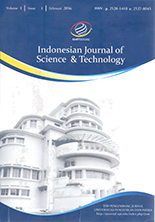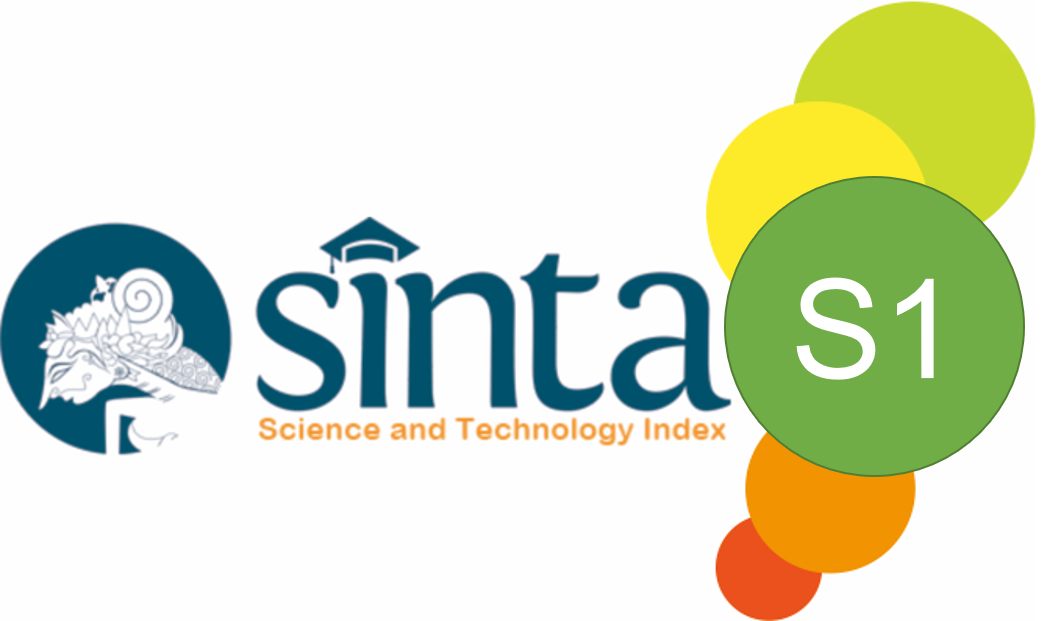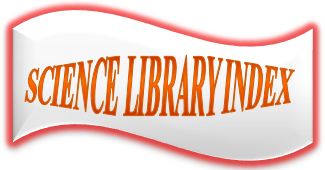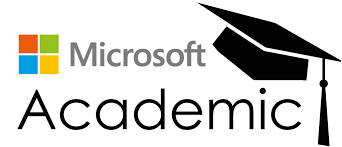Reducing Early Failure through a Six-Week Integrated Approach in Foundational Engineering Mathematics
Abstract
Keywords
Full Text:
PDFReferences
Abidin, Z., Herman, T., Wahyudin, W., and Farokhah, L. (2025). Bibliometric analysis using vosviewer with publish or perish of computational thinking and mathematical thinking in elementary school. ASEAN Journal for Science Education, 4(1), 7-16.
Al Husaeni, D.F., Haristiani, N., Wahyudin, W., and Rasim, R. (2024). Chatbot artificial intelligence as educational tools in science and engineering education: A literature review and bibliometric mapping analysis with its advantages and disadvantages. ASEAN Journal of Science and Engineering, 4(1), 93-118.
Anwar, N.B.B., and Minghat, A.D. (2024). Industrial engineering students’ readiness towards industrial revolution 4.0 at technical and vocational university: Literature review. ASEAN Journal for Science Education, 3(1), 95-112.
Arifiani, I., Nurul.H, L., and Rahmawan, S. (2025). Problem based learning (PBL) learning model for increasing learning motivation in chemistry subject: Literature review with bibliometric analysis. ASEAN Journal for Science Education, 4(1), 17-30.
Assem, H.D., Owusu, M., Issah, S., and Issah, B. (2024). Identifying and dispelling students’ misconceptions about electricity and magnetism using inquiry-based learning in selected junior high schools. ASEAN Journal for Science Education, 3(1), 13-32.
Camilon, K.F., Dupitas, J.E.A., Cajandig, A.M.C., Cuba, B.A.A., Valdez, A.G., Abelito, J.T., and Marcella, A.M.A. (2025). Perceptions of senior high school science, technology, engineering, and mathematics (STEM) students toward STEM and non-STEM courses: A comparative qualitative study. ASEAN Journal for Science Education, 4(2), 105-112.
Fiandini, M., Hofifah, S.N., Ragadhita, R., and Nandiyanto, A.B.D. (2024). How to make a cognitive assessment instrument in the merdeka curriculum for vocational high school students: A case study of generating device materials about the stirling engine. ASEAN Journal for Science Education, 3(1), 65-86.
Fiandini, M., Mukhamedov, G.I., Khimmataliev, D.O., and Nandiyanto, A.B.D. (2025). Advancing sustainability and green engineering in mechanical engineering education: Concepts, research trends, challenges, and implementation strategies. ASEAN Journal for Science and Engineering in Materials, 4(2), 169-224.
Gatchalian, C.B., Handig, J.E.R., and Baluyot, F. (2024). Utilization of visual basic software and its effect on students’ computer programming performances. ASEAN Journal for Science Education, 3(2), 155-172.
Glushchenko, V.V. (2024). The paradigm of curriculum differentiation in higher IT education. ASEAN Journal for Science Education, 3(1), 87-94.
Hashim, S., Luta, G.R.A., and Nincarean, D. (2024). Adaptive strategies for technical and vocational education and training (TVET) science educators: Navigating online home-based learning. ASEAN Journal for Science Education, 3(2), 113-128.
Ibrahim, A., Bolaji, H.O., and Abdulraheem, A.J. (2025). Accessibility and utilization of artificial intelligence (AI)-based intelligent tutoring systems (ITS) and information and communication technology (ICT) in enhancing biology education. ASEAN Journal for Science Education, 4(2), 93-104.
Ibrahim, I.M., Suryadi, K., Darmawan, C., and Nurbayani, S. (2024). Examining climate change issues for improving cross-generation awareness in 21st century agenda: A bibliometric approach. ASEAN Journal for Science Education, 3(2), 173-182.
Kamraju, M. (2025). The ethical and educational implications of greenwashing in corporate sustainability practices. ASEAN Journal for Science Education, 4(1), 45-52.
Lasisi, A.K., Hassan, A.A., and Abdulkareem, H.B. (2024). Impact of single parenting on academic performance of junior secondary school students in mathematics. ASEAN Journal for Science Education, 3(2), 129-138.
Muhayyo, D., and Muhabbat, H. (2024). Towards designing technology for classroom role-play. ASEAN Journal for Science Education, 3(2), 139-154.
Nelvarina, N., Agustina, T.W., and Solikha, M. (2024). Can the inquiry learning model improve students' system thinking skills?. ASEAN Journal for Science Education, 3(1), 55-64.
Nordin, N.A.H.M. (2022). Correlation between process engineering and special needs from bibliometric analysis perspectives. ASEAN Journal of Community and Special Needs Education, 1(1), 9-16.
Ogundele, A.G., Umar, I.Y., and Idris, A.M. (2025). The emergence of new technologies in metalwork/automobile industries: Issues, challenges and opportunities in emanating from for delivery of technical education on a pandemic era. ASEAN Journal for Science Education, 4(1), 1-6.
Padmore, E.A., and Ali, C.A. (2024). Exploring effective differentiated instruction in the teaching and learning of mathematics. ASEAN Journal for Science Education, 3(1), 41-54.
Pratiwi, D.T., Zahratunnisa, F., and Rahmawan, S. (2025). The impact of project-based learning (PjBL) on students’ motivation and learning outcomes: A literature review. ASEAN Journal for Science Education, 4(1), 53-58.
Rahmiyanti, H. (2024). Bibliometric analysis on artificial intelligence research in Indonesia vocational education. ASEAN Journal for Science Education, 3(2), 183-192.
Saadu, U.T., Obafemi, K.E., Olaniyan, A.O., Sulyman, H.T., Ajayi, O., and Abubakar, A.Y. (2024). Retaining female students in school: Intervention for improving menstrual hygiene. ASEAN Journal for Science Education, 3(1), 33-40.
Saidirasilovna, U.N. (2025). Preparing future geography teachers through problem-based learning technology: A short review. ASEAN Journal for Science Education, 4(1), 39-44.
Salman, A.A., and Yahaya, O. (2025). Perception of early childhood education lecturers on the use of virtual learning. ASEAN Journal for Science Education, 4(1), 31-38.
Shinde, S.M., and Shinde, M.B. (2025). Integrating TPACK for soft skills and communication in engineering education: Definition, concept, strategies, challenges, and opportunities. Indonesian Journal of Multidiciplinary Research, 5(1), 1-20.
Sulyman, H.T., Salaudeen, M., and Jimoh, F.A. (2025). Effect of preparatory homework on pupils’ academic performance in basic science. ASEAN Journal for Science Education, 4(2), 85-92.
Susilawati, A. (2024). A bibliometric analysis of global trends in engineering education research. ASEAN Journal of Educational Research and Technology, 3(1), 103-110.
Susilawati, A., Al-Obaidi, A.S.M., Abduh, A., Irwansyah, F.S., and Nandiyanto, A.B.D. (2025). How to do research methodology: From literature review, bibliometric, step-by-step research stages, to practical examples in science and engineering education. Indonesian Journal of Science and Technology, 10(1), 1-40.
Vicera, W.J.C. (2025). Development and validation of CalTech (calculator techniques) exercises manual. ASEAN Journal for Science Education, 4(2), 59-64.
Villavecencio, R.D., Layno, P.J.S., Tumangday, B.T., Estrella Jr, A.D., Mailla Jr, F.A., Abusama, H.P., Mecida, S.V., and Valdez, D.M. (2025). Utilization of dynamic visualization tools: Enhancing students’ motivation and engagement in biology education. ASEAN Journal for Science Education, 4(2), 65-84.
Wahyudi, W., Setiawan, A., Suhandi, A., and Samsudin, A. (2024). Technology-supported project-based learning: Trends, review and future research in science, technology and engineering education. ASEAN Journal of Science and Engineering, 4(1), 119-126.
Rahman, A. A., Kaniawati, I., Riandi, R., Hendayana, S., and Rahman, T. (2024). Low-cost Arduino to foster the engineering design process in STEM education. Journal of Engineering Science and Technology, 19, 35–42.
Fiandini, M., Nandiyanto, A. B. D., and Muktiarni, M. (2024). Experimental demonstration for teaching the concept of steam engine power plant to vocational students to support the sustainability development goals (SDGs) and its comparison to Indonesian Merdeka curriculum. Journal of Engineering Science and Technology, 19(5), 1878–1905.
Prince, M. (2004). Does active learning work? A review of the research. Journal of Engineering Education, 93(3), 223–231.
Kajander, A., and Lovric, S. (2009). Transition from secondary to tertiary mathematics: McMaster University experience. International Journal of Mathematical Education in Science and Technology, 40(7), 927–944.
Johnson, D., Johnson, R., and Smith, K. (1998). Cooperative learning returns to college: What evidence is there that it works? Change: The Magazine of Higher Learning, 30(4), 26–35.
Michael, J. (2006). Where’s the evidence that active learning works? Advances in Physiology Education, 30(4), 159–167.
Felder, R. M., and Brent, R. (2009). Active learning: An introduction. ASQ Higher Education Brief, 2(4), 1–5.
Freeman, S., Eddy, S. L., McDonough, M., Smith, M. K., Okoroafor, N., Jordt, H., and Wenderoth, M. P. (2014). Active learning increases student performance in science, engineering, and mathematics. Proceedings of the National Academy of Sciences, 111(23), 8410–8415.
Mills, J., and Treagust, D. (2003). Engineering education – Is problem-based or project-based learning the answer? Australasian Journal of Engineering Education, 3(2), 2–16.
Engelbrecht, J., Harding, A., and Potgieter, M. (2005). Undergraduate students’ performance and confidence in procedural and conceptual mathematics. International Journal of Mathematical Education in Science and Technology, 36(7), 701–712.
Ferreira, C., Gabriel, B., Valente, R., and Figueiredo, C. (2024). Engineering education challenges and strengths: Reflecting on key-stakeholder’s perspectives. Frontiers in Education, 9, 1297267.
Al-Obaidi, A. S. M. (2025). A bibliometric review of publications in the Journal of Engineering Science and Technology (JESTEC) (2009–2025). ASEAN Journal of Educational Research and Technology, 4(3), 267–294.
Tien, D. T. K. (2019). The positive effect of peer feedback in an engineering group project. Journal of Engineering Science and Technology, Special Issue 1/2019, 57–66.
Zulkifli, N. N., Abd Halim, N. D., and Yahaya, N. (2018, November). The impact of online reciprocal peer tutoring on students’ academic performance. Journal of Engineering Science and Technology, Special Issue on i-CITE 2018, 10–17.
Cheong, A. C. H., and Sivanesan, S. (2022, May). To evaluate the collaboration competency in engineering education by using computer support collaboration learning (CSCL) method. Journal of Engineering Science and Technology, Special Issue on SIET2022, 1–11.
Al-Atabi, M. (2011, April). CDIO curriculum for mechanical engineering undergraduate programme. Journal of Engineering Science and Technology, 6(2), 251–259.
Al-Atabi, M., and Chin, S. B. (2007, December). A case study in project-based learning using flow visualisation. Journal of Engineering Science and Technology, 2(3), 290–297.
Ana, A., Yulia, C., Jubaedah, Y., Muktiarni, M., Dwiyanti, V., and Maosul, A. (2020, December). Assessment of student competence using electronic rubric. Journal of Engineering Science and Technology, 15(6), 3559–3570.
Subekti, S., Ana, A., and Astuti, T. (2021, February). E-rubric to measure employability skills. Journal of Engineering Science and Technology, 16(1), 852–859.
Gallagher, T., Slof, B., van der Schaaf, M., Toyoda, R., Tehreem, Y., Fracaro, S. G., and Kester, L. (2024). Reference frames for learning analytics dashboards: The progress and social reference frame and occupational self-efficacy. Journal of Computer Assisted Learning, 40(3), 816–832.
Christensen, R. B., Jensen, T., and Madsen, K. (2023). Transforming first-year calculus with field-specific problems. arXiv, 2302, 05904.
Grizzle, J. (2025). Calculus for the modern engineer: Putting the joy back in learning advanced mathematics. arXiv, 2501, 10406.
Ryan, O., Sajadi, S., Barrera, S., and Jaghargh, R. T. (2025, January). Understanding the effects of a math placement exam on Calculus 1 enrollment and engineering persistence. Education Sciences, 15(2), 154.
Christensen, O., Dahl, C. M., and Fajstrup, L. (2023, February). Field-specific calculus courses for engineering students: Increasing relevance through contextualized problems. arXiv Preprint, 2302, 05904.
Christensen, R. B., Dahl, B., and Fajstrup, L. (2023, February). Transforming first-year calculus teaching for engineering students – Blocks with field specific examples, problems, and exams. arXiv Preprint, 2302, 05904.
Ziatdinov, R., and Valles, J. (2022). Synthesis of modeling, visualization, and programming in GeoGebra as effective STEM teaching. arXiv, 2202, 01415.
Rahma, Q. Z., Rohendi, D., Yayat, Y., and Morin, S. (2025, June). Enhancing engineering math understanding for mechanical engineering education students via Van Hiele phases and GeoGebra. Journal of Mechanical Engineering Education, 12(1), 31–40.
Ruslau, M. F. V., Dadi, O., and Nurlianti. (2025, April). The impact of GeoGebra AR on students' geometric thinking based on Van Hiele theory. Journal of Honai Math, 8(1), 115–128.
Noaman, N. M. (2024, April). Innovative Excel-based assessment system: Enhancing student outcomes in engineering education. Journal of Engineering Science and Technology, 19(2), 648–669.
Mustapha, R., Rahim, Z. L. A., and Azman, M. N. A. (2014, December). Exploring the problems faced by technical school students in learning engineering courses. Journal of Engineering Science and Technology, 9(6), 690–701.
Aisyah, A., Priatna, N., Juandi, D., and Priatna, B. A. (2025). Praxeological analysis of international mathematical literacy questions for developing numeracy assessments. Journal of Engineering Science and Technology, 20(3), 33–40.
Akinoso, S.O. (2023). Motivation and ICT in secondary school mathematics using unified theory of acceptance and use of technology model. Indonesian Journal of Educational Research and Technology, 3(1), 79-90.
Angraini, L. M., Kusuma, D. A., Wahyuni, R., Susilawati, A., and Reza, D. (2025). Augmented reality (AR) for geometry based on prior mathematical knowledge. Journal of Engineering Science and Technology, 20(2), 182–189.
Awofala, A.O.A., and Agbolade, F.O.O. (2024). Effect of peer-tutoring strategy on senior secondary school students’ achievement in mathematics. ASEAN Journal for Science Education, 3(1), 1-12.
Bendol,R.L., and Dalayap Jr., R.H. (2025). Structural equation modelling of factors influencing confidence in mathematics. ASEAN Journal of Educational Research and Technology, 4(2), 107-124.
Dermawan, R., Muktiarni, M., and Mupita, J. (2022). Efforts to increase the interest of junior high school students in mathematics lessons using the tik tok learning tool. ASEAN Journal for Science Education, 1(2), 81-88.
Farokhah, L., Herman, T., Wahyudin, W., and Abidin, Z. (2024). Global research trends of mathematics literacy in elementary school: A bibliometric analysis. Indonesian Journal of Educational Research and Technology, 4(3), 279-290.
Farokhah, L., Herman, T., Wahyudin, W., Khasanah, L.A.I.U., Zulfadhli, M., Abidin, Z., Huda, M.M., and Ariffiando, N.F. (2025). How to teach fraction for empowering student mathematics literacy: Definition, bibliometric, and application using digital module. ASEAN Journal of Science and Engineering, 5(1), 77-102.
Inayah, S., Darhim, D., Prabawanto, S., Jupri, A., and Septiani, S. (2025). Investigating students' difficulties in numeracy: A focus on linear functions and the tools dimension. Journal of Engineering Science and Technology, 20(2), 150–157.
Jose, M.T.N.S. (2022). Factors that affect the performance of selected high school students from the third district of Albay in International Mathematics Competitions. ASEAN Journal for Science Education, 1(1), 9-16.
Kania, N., Kusumah, Y. S., Dahlan, J. A., and Nurlaelah, E. (2024). Development Sky Class application to calculate turtle using the concept of number patterns: Preliminary phase. Journal of Engineering Science and Technology, 19, 85–93.
Lagcao, Y.G.D., Dechavez, J.P.A.D., Goleng, D.J.G., Lagca, Y.G.D., Tangkli, K.Y.M., and Vicera, W.J.C. (2023). Math readiness and its Effect on the online academic performance of science, technology, engineering, and mathematics students. ASEAN Journal for Science Education, 2(1), 33-38.
Maizora, S., Suryadi, D., Juandi, D., Dasari, D., and Muchlis, E. E. (2025). Integration of GeoGebra and web: An innovative solution for guided discovery learning on triangle congruence material to improve conceptual understanding for prospective mathematics teacher students. Journal of Engineering Science and Technology, 20(3), 25–32.
Marlissa, I., Turmudi, T., Juandi, D., and Wahyudin, W. (2025). Unveiling ethnomathematics: Mathematical activities in the Kandala of the Marori Men-Gey tribe. Journal of Engineering Science and Technology, 20(3), 121–128.
Morin, S., Suryadi, D., Prabawanto, S., and Sulistiyo, D. (2025). Junior high school students in solving mathematical ill-structured problems: Analyzing using Harel theory. Journal of Engineering Science and Technology, 20(3), 1–8.
Murni, S., Suryadi, D., and Prabawanto, S. (2025). Lower secondary students epistemological obstacle in solving mathematical literacy task: Focus on plane geometry. Journal of Engineering Science and Technology, 20(3), 49–56.
Nurhikmayati, I., Darhim, D., Dahlan, J. A., and Prabawanto, S. (2025). Enhancing critical thinking in geometry with GeoGebra: A focus on cubes and cuboids. Journal of Engineering Science and Technology, 20(3), 65–72.
Payung, Z., Kusumah, Y. S., Mulyaning, E. C., and Avip, B. (2025). Enhancing elementary students’ mathematical representation skills through VBA-based digital learning media in Microsoft Excel. Journal of Engineering Science and Technology, 20(3), 137–144.
Radiamoda, A.A. (2024). Difficulties encountered by the students in learning mathematics. Indonesian Journal of Educational Research and Technology, 4(1), 63-70.
Rahmawati, I., Sa’dijah, C., Hidayat, A., Subanji, S., Susilawati, A. (2025). The development of worksheet based on realistic mathematics assisted by online flipbook. Journal of Engineering Science and Technology, 20(3), 81-88.
Rohimah, S. M., Putri, S. A., Nurdiansah, Y., and Supriyadi, E. (2024). Technology exploration of augmented reality MathCityMap to increase mathematical proficiency. Journal of Engineering Science and Technology, 19(5), 1990–2002.
Saputri, V., Kusumah, Y. S., Turmudi, T., and Jupri, A. (2025). Designing a STEM-RME-based mathematics e-module to enhance high school students’ numeracy. Journal of Engineering Science and Technology, 20(3), 177-184.
Supriyadi, E., Turmudi, T., Dahlan, J. A., and Juandi, D. (2024). Ethnomathematics integration in mathematics classroom: Impacts and insights assisted by ATLAS.ti 23. Journal of Engineering Science and Technology, 19, 67–74.
Triwahyuningtyas, D., Hudha, M. N., Tyas, D. A., Widiaty, I., Nandiyanto, A. B. D., Permanasari, A., and Hamidah, I. (2020). Teaching basic mathematics and technology to elementary students with autism. Journal of Engineering Science and Technology, 15(3), 1589-1595.
DOI: https://doi.org/10.17509/ijost.v11i2.89683
Refbacks
- There are currently no refbacks.
Copyright (c) 2025 Universitas Pendidikan Indonesia

This work is licensed under a Creative Commons Attribution-ShareAlike 4.0 International License.
Indonesian Journal of Science and Technology is published by UPI.
View My Stats




















